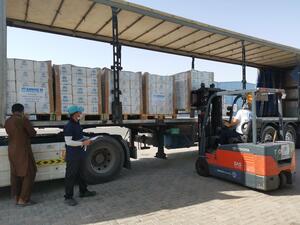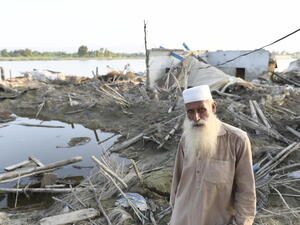Afghanistan: return of IDPs
Afghanistan: return of IDPs
UNHCR and the International Organisation for Migration have now returned 5,000 internally displaced people from northern Afghanistan's Panjshir Valley to villages in the Shomali Plain, west of the capital, Kabul. The returnees, mostly ethnic Tajiks who had fled Taliban rule, saw their homes for the first time in three years. On arrival, those returning were given winterised tents, stoves and other supplies that will enable them to survive the winter, since most of the villages they are coming back to are in ruins.
Meanwhile on Sunday, UNHCR staff returned to the north-eastern city of Jalalabad to re-open the agency's office there. The Jalalabad office is the fourth UNHCR office to re-open since the collapse of the Taliban regime. The other offices are in Kabul, Herat, and Mazar-i-Sharif. The southern city of Kandahar remains the only of Afghanistan's major cities where UNHCR has not re-established its presence yet.
As aid agencies gradually build up humanitarian presence inside Afghanistan, some people continue to leave the country for lack of sufficient aid. An estimated 3,000 people trying to leave Afghanistan are stuck in a strip of no-man's land separating Afghanistan from Pakistan near the Chaman border post in south-western Pakistan. UNHCR is trying to persuade the Pakistani authorities to allow the people into the Chaman area camps, which already hold tens of thousands of Afghans.
While some are trying to leave, many are spontaneously going back to Afghanistan through the same border point. Last weekend alone, an estimated 4,000 people went back to Afghanistan through the Chaman crossing. Over the past two months, an estimated 80,000 people have spontaneously gone back to Afghanistan from Pakistan and Iran.









